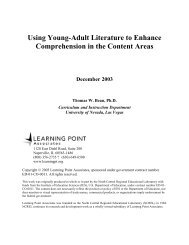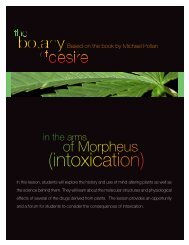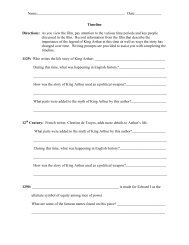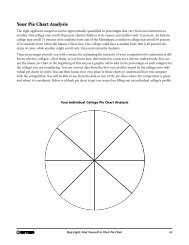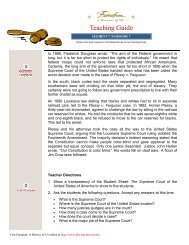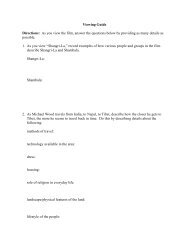Handout 1: "Details of Los Jardines del Humaya Cemetery" - PBS
Handout 1: "Details of Los Jardines del Humaya Cemetery" - PBS
Handout 1: "Details of Los Jardines del Humaya Cemetery" - PBS
You also want an ePaper? Increase the reach of your titles
YUMPU automatically turns print PDFs into web optimized ePapers that Google loves.
Two Poems by Dolores Dorantes<br />
Directions: The cemetery <strong>Los</strong> <strong>Jardines</strong> <strong>del</strong> <strong>Humaya</strong>, located in the Mexican state <strong>of</strong> Sinaloa, inspired<br />
Dolores Dorantes to capture related sensory details and feelings in the two poems featured here. Read<br />
each poem, consider the details you noted about the cemetery while watching part <strong>of</strong> the film El Velador<br />
(The Night Watchman) and respond to the questions below.<br />
This is an image <strong>of</strong> love though it might seem to be the image <strong>of</strong> a dead<br />
person. We drive with dirt on top <strong>of</strong> the glass, with the sun cutting across<br />
the dirt we drive. We arrive when everyone disappears. We defend nothing.<br />
We defend it from no one. They have hired us to remain standing in this<br />
silence. Someone is building a city. A beautiful city that is going up in the<br />
country. Living cupolas inside its body. We keep watch. We protect it from<br />
no one. Someone gives us money to keep our eyes open in the middle <strong>of</strong><br />
this night. Something keeps us awake when the wind strolls the sound <strong>of</strong> a<br />
band. A box <strong>of</strong> music and <strong>of</strong> mourning. Of fiesta and <strong>of</strong> silence.<br />
1. Why do you think Dorantes calls the image <strong>of</strong> a dead person, “an image <strong>of</strong> love?”<br />
2. Who does “we” represent in this poem? How do you know?<br />
3. Dorantes calls the cemetery, “a beautiful city?” In what ways is the cemetery like a city? In what ways<br />
is it different?<br />
4. What is the “box” referenced in the poem?<br />
A clean woman takes <strong>of</strong>f her shoes before opening this city. And before<br />
setting foot in this city she lets the water run. Below is the sea: water and<br />
blood. Perfection and pain. We don’t see. We don’t speak. We are not the<br />
witnesses. The witness is a saint dressed in green where the woman leaves<br />
her love. The city at this hour ripples with all its colors. This city sprouts.<br />
The city awakens and shakes its dead person’s heart. It greets us and<br />
shakes it like a rattle.<br />
1. Why do you think Dorantes describes the woman as “clean?”<br />
2. What does “this city” represent?<br />
3. On which specific details <strong>of</strong> the cemetery does the poet focus?<br />
4. What do you think is the message <strong>of</strong> this poem?<br />
What title would you give to each <strong>of</strong> these poems? Why?





